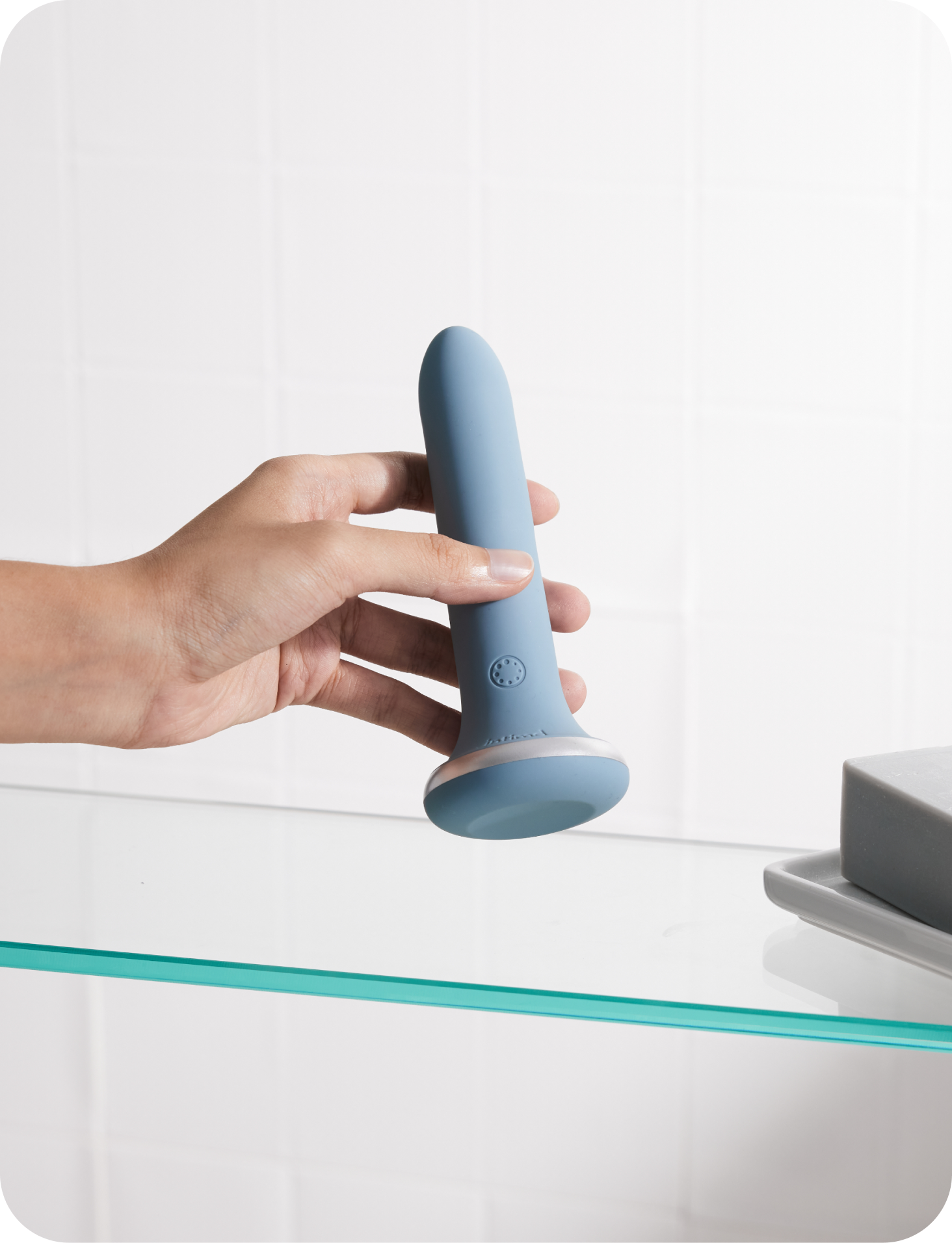Pelvic floor disorders affect many, with up to 25% of women experiencing issues like pelvic organ prolapse, urinary incontinence, and bowel control problems. Risk factors include age, pregnancy, and chronic constipation.
Pelvic floor therapy is a recommended, minimally invasive option for treating these dysfunctions. It effectively alleviates symptoms, improving overall quality of life. Here's what you need to know about this impactful treatment.
Table of Contents
-
Understanding the Pelvic Floor
-
Symptoms of Pelvic Floor Dysfunction
-
What is Pelvic Floor Therapy and Its Benefits
-
Pelvic Floor Therapy: What To Expect
-
Dilators for Daily Pelvic Wellness
-
Conclusion
Understanding the Pelvic Floor
Let's begin with the basics: The pelvis is the bony structure at the base of the spine. Consisting of a ring of bones that fuse together, it supports the spine and connects the upper body to the lower body. The pelvic region includes bones, a cavity, and related structures, and houses vital organs like the bladder, the reproductive system, and parts of the digestive system.

Pelvic floor muscles, which form a hammock-like structure that goes from the pubic bone to the coccyx, support organs like the bladder, uterus, and bowel. The deep pelvic floor muscles consist of the pubococcygeus, iliococcygeus, coccygeus, and puborectalis muscles. This intricate structure is vital for core strength, stability, and organ function. Dysfunction in these muscles may lead to issues such as incontinence or pelvic pain.

Pelvic floor dysfunction can arise from various factors; pregnancy and childbirth, aging, sedentary lifestyles, and underlying chronic conditions can all tip the delicate balance of the pelvic floor, necessitating intervention.
Symptoms of Pelvic Floor Dysfunction
Pelvic floor dysfunction can manifest through various signs and symptoms, varying from person to person. Here are common indicators of pelvic floor dysfunction:
- Urinary Issues: Frequent urination, urgency, incontinence, and difficulty controlling urine flow.
- Bowel Concerns: Constipation, straining, incomplete bowel movements, and fecal incontinence.
- Pelvic Discomfort: Pain, pressure, or bulging in the pelvic region.
- Sexual Challenges: Pain during or after intercourse and discomfort during sexual activity.
- Muscle Issues: Pelvic floor tightness, weakness, spasms, and difficulty contracting or relaxing muscles.
- General Discomfort: Lower back pain, hip pain, pelvic bone pain, and discomfort when sitting.
Emotional Impact: Anxiety, stress, and an overall impact on quality of life and well-being.
What is Pelvic Floor Therapy and Its Benefits
Pelvic floor therapy is a specialized form of therapy that targets issues related to the pelvic region's muscles, ligaments, and connective tissues. It aims to improve pelvic floor function and alleviate symptoms such as pain, incontinence, and sexual dysfunction.
More than just a reactive solution, pelvic floor therapy is a proactive approach to holistic well-being that provides numerous benefits for individuals dealing with pelvic floor dysfunction or related issues. Some of the key benefits include:
- Pelvic Pain Reduction: Pelvic floor therapy alleviates pain and discomfort by addressing muscle tension, spasms, or other sources of pain associated with conditions like endometriosis, interstitial cystitis, or pelvic floor muscle tension. These techniques focus on releasing muscle tension and improving flexibility.
- Pelvic Organ Support: Pelvic floor physical therapy strengthens pelvic floor muscles, supporting the bladder, uterus, vagina, and rectum. By enhancing muscle strength and coordination, this therapy eases symptoms associated with pelvic organ prolapse, including urinary or fecal incontinence and pelvic pressure.
- Bladder and Bowel Control: Targeted exercises improve the coordination and strength of pelvic floor muscles for better control over bladder and bowel function, alleviating urinary urgency, hesitancy, and leakage, and addressing bowel irregularities.
- Revitalizing Sexual Wellness: Pelvic floor therapy addresses sexual-related issues like weakness or tightness during intercourse by focusing on exercises and techniques that promote overall core stability. It may benefit those experiencing sexual pain, arousal difficulties, or other dysfunctions.
- Postpartum Recovery: Pregnancy, childbirth, and postpartum recovery significantly impact pelvic floor strength and functionality. During pregnancy, pelvic floor therapy prepares the pelvic floor for childbirth and alleviates common pain and discomfort. Postnatally, this therapy aids pelvic floor rehabilitation, addressing concerns related to weakness, muscle strain, urinary or fecal incontinence, and perineal healing.
- Overall Pelvic Health: Pelvic floor dysfunction and physical changes during pregnancy can lead to emotional stress and anxiety. Pelvic floor therapy eases these emotions by fostering a sense of control and well-being. Being attuned to your body and its changes positively impacts overall mental health.
Pelvic Floor Therapy: What To Expect
Your first pelvic floor therapy session is typically done in a private, one-on-one setting and involves three phases designed to restore mobility and reduce pain. These phases include:
Assessment and Evaluation
The session begins with an initial assessment by a physical therapist (PT). This phase includes a comprehensive evaluation and a detailed discussion about your medical history, symptoms, and lifestyle factors that could influence pelvic health.
Following the assessment, a physical examination evaluates the strength, flexibility, and coordination of your pelvic floor muscles, including performing specific activities and positions to gauge their function and responsiveness. This assessment helps your PT tailor a treatment plan to meet your needs. Your therapist may refrain from performing an internal exam if you're not ready or experience pain when moving to gradually deeper layers of muscle.
Based on the insights gained during the assessment, the next step is to design a plan to help you ease your symptoms and gradually return to your normal daily activities and routines.
Customized Treatment
After the consultation, your physical therapist will work with you to create an individualized treatment plan to address your pelvic health needs. Pelvic floor physical therapy can include techniques or exercises such as:
- Pelvic Floor Exercises: Your therapist will guide you through specific exercises, like Kegels exercises, to strengthen or relax your pelvic floor muscles, accompanied by breathing and timing techniques. These exercises can help relieve pain during sex and control incontinence. Your PT can also teach you to perform Kegel exercises at home, gradually improving your pelvic floor function.
- Biofeedback: Biofeedback involves using a sensor placed in the vagina to provide real-time feedback on muscle activity. Your physical therapist can then use this information to teach you how to control effectively your pelvic floor muscles. This invasive but painless technique helps you gain awareness and control over your pelvic floor muscles, promoting proper function.
- Manual Therapy: Manual therapy is a hands-on technique where your physical therapist applies pressure and massages the tight pelvic floor muscles externally and internally. This approach aims to increase blood flow to the affected muscles, helping them stretch and relax.
- Trigger Point Therapy: This technique applies pressure to specific spots on your body, internally or externally, known as trigger points. Your doctor or therapist might also give you anesthesia to help soothe the pain and retrain the affected muscles, ultimately reducing discomfort and enhancing pelvic strength.
- Electrical Stimulation: Despite its name, this technique isn't painful. It's a safe and effective method for treating pelvic floor dysfunctions, especially pain caused by muscle spasms. It involves sending a painless electrical signal through a probe to stimulate pelvic nerves and muscles. This results in muscle contraction and release, ultimately strengthening those muscles.
- Dilator Therapy: Dilator therapy uses cylindrical devices of increasing sizes to stretch and desensitize muscles and tissues in the vaginal or pelvic area. Starting with the smallest dilator, you can gradually progress to larger sizes over time.
- Education and Lifestyle: Pelvic floor therapy involves educating the individual about their pelvic anatomy, the role of pelvic floor muscles, healthy bladder habits, dietary modifications, and how specific exercises and techniques can contribute to improved function and symptom relief.
Post-Therapy Maintenance
After completing pelvic floor therapy, your attention should turn to post-therapy maintenance. Your PT may provide a personalized home exercise program for ongoing exercises at home that ensure the sustained benefits of the therapy.
Additionally, follow-up sessions to monitor progress, address concerns, and refine the post-therapy plan can be scheduled. The post-therapy maintenance, combined with a home exercise routine and regular follow-up sessions, is essential to maintain and optimize your pelvic health for the long run.
Dilators for Daily Pelvic Wellness
But there’s more to pelvic floor health than just therapy sessions. Incorporating simple exercises and healthy habits into your daily life can go a long way. One example is vaginal dilators, handy tools in pelvic floor therapy that come in various sizes to gradually stretch and relax pelvic floor muscles. Healthcare professionals, such as pelvic floor physical therapists or gynecologists, often recommend dilator therapy to help women overcome pain or discomfort related to penetration, sexual activity, or pelvic floor muscle tension.
VWELL dilators are made of medical-grade, paraben-free silicone that is safe for use. They aid in reducing pain and improving muscle control, helping to restore normal function.
Conclusion
Pelvic floor therapy is an effective treatment for pelvic floor dysfunction and related issues such as urination problems and painful sex. Starting treatment soon after symptoms begin is essential, as symptoms can worsen over time and significantly impact your quality of life. If you've been dealing with persistent pelvic pain or related challenges, consult your healthcare provider for guidance and potential additional tests to address underlying issues.
FAQs
1. Is pelvic floor therapy only for women?
No, pelvic floor therapy is not exclusive to women. While it is often associated with women's health, men can also benefit from pelvic floor therapy, especially in cases of pelvic pain, post-surgery recovery, or issues related to prostate health.
2. Is pelvic floor therapy painful?
Therapy should not be painful, but some internal examinations or treatments may cause mild discomfort. However, therapists assess each individual's tolerance levels and tailor treatment plans to ensure their comfort during therapy.
3. How long does a typical pelvic floor therapy session last?
The duration of a pelvic floor therapy session can vary but generally lasts between 30 to 60 minutes. The number of sessions needed depends on the individual's condition and the therapist's assessment.
4. Does insurance cover pelvic floor therapy?
Pelvic physical therapy is often covered by insurance, especially when medically necessary for conditions like pelvic floor dysfunction. However, be sure to check with your provider to confirm coverage. Contact physical therapists directly to inquire about accepted insurance and potential out-of-pocket costs. Some insurers may require a physician's referral or a specific diagnosis for coverage.




